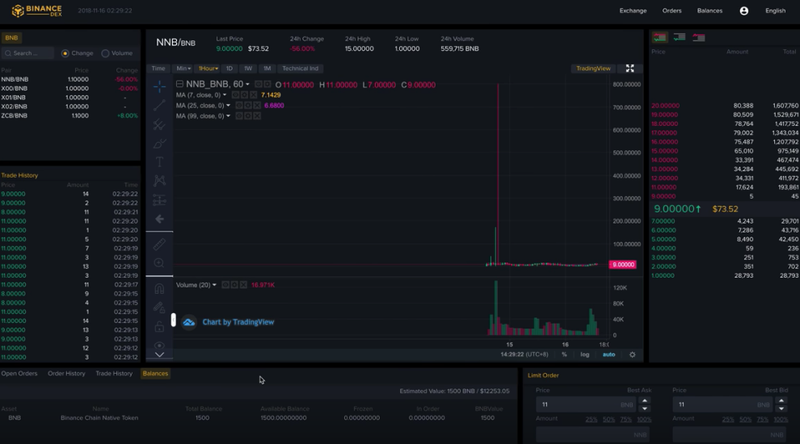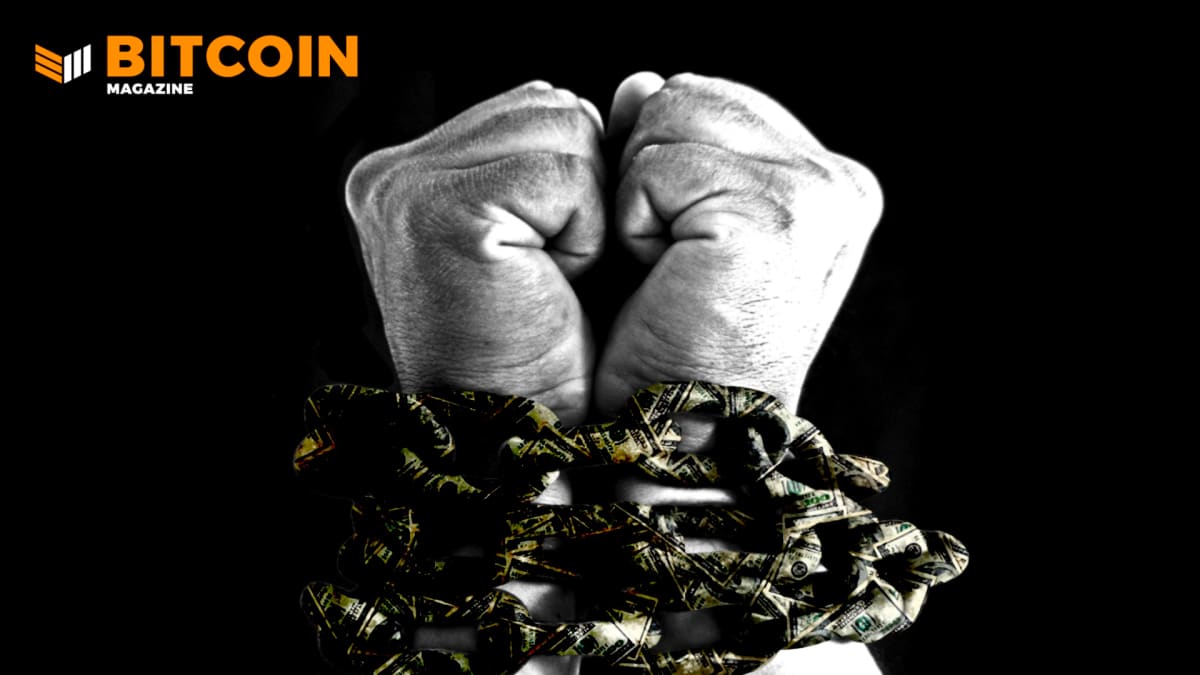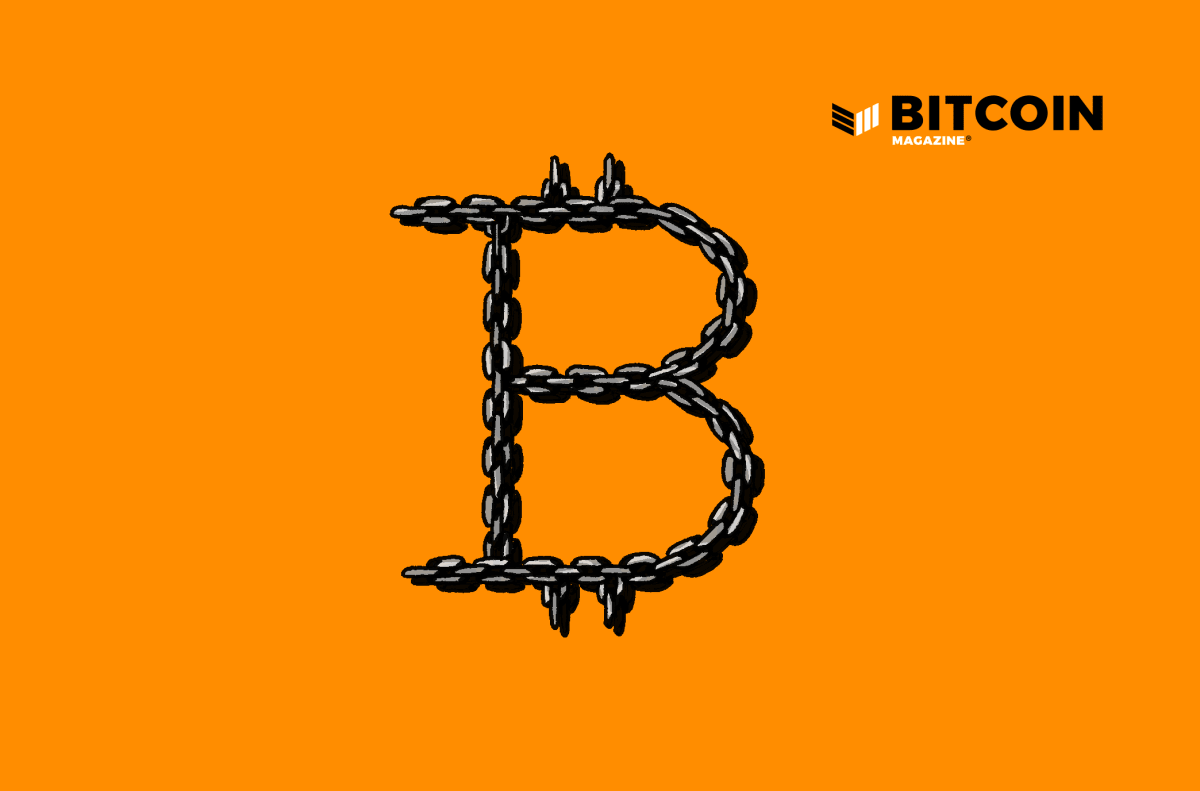A Case For Unions And Bitcoin
How unions and Bitcoin both serve to protect the interests of working people through dissemination of governance.

I am part of a subset of Local Union (ATU1555) based out of Oakland, California, proposing that our union allocate a percentage of our treasury and monthly union dues to bitcoin.
I wish I could take credit for the original ATU1555BITCOIN idea, but I cannot. After our tenth or probably more like twentieth bitcoin breakroom discussion, the former president of our local asked if I had ever considered how bitcoin could be applied to the union.
The answer to that question was “No, I had not.” In fact, I had never attended a union meeting prior to that point and had little interaction with or knowledge of what the union did other than represent members who were facing disciplinary action.

ATU1555BITCOIN Is Birthed
November 26, 2020 was the day the ATU155BITCOIN idea was birthed; the date I remember only because I was working a holiday (Thanksgiving) shift at a time and location that I haven’t worked since.
When the union and bitcoin idea was originally raised, it went in one ear and out the other. Not because it wasn’t a great idea; I had come to the conclusion a couple of years prior that Bitcoin could and would empower anyone and anything. Still, between my never having stepped foot in our union hall and not being aware of any unions that were involved with bitcoin, it didn’t instantly dawn on me how our union could specifically benefit from it.
Fast-forward a few months later to February 8, 2021, the day Tesla not only made history with its $1.5 billion bitcoin buy and accept announcement but also making Bitcoin headlines that day (as if the Tesla buy wasn’t news enough) was Miami Mayor Francis Suarez’s announcement that he was working on a resolution to add Bitcoin to the city’s balance sheet.
MicroStrategy making their historic $250 million bitcoin purchase on August 11, 2020, was a big deal to bitcoin proponents such as myself, but for a household brand such as Tesla (which has a 370-acre manufacturing and office space ten miles away from one of our work report locations) to add bitcoin to its balance sheet was a story anyone could resonate with — Tesla’s bitcoin purchase was a big deal for the world.
Mayor Suarez’s bitcoin announcement was the icing to Tesla’s bitcoin buy cake, and it was now clear that it was time for me to revisit that fine idea from a few months back to see if it would be possible for our union to follow the lead set by MicroStrategy, Tesla and maybe now even Miami by allocating a percentage of our treasury to bitcoin.
Bitcoin Is Code For What Unions Stand For In Theory
Regardless of if you are a die-hard bitcoin maximalist or a staunch union activist, chances are you’ve never considered how aligned unions are with Bitcoin’s ethos.
Only after months of research and consideration did I conclude that the alignment between unions and bitcoin is so strong that I now contend that bitcoin is code for many of the principles that unions stand for in theory.
The Synergies Between Unions And Bitcoin Include:
Unions Are Universal: Unions represent and protect the interests of working people globally.
Bitcoin Is Universal: Bitcoin is permissionless and borderless. Every second of every day, someone somewhere in the world is benefiting from Bitcoin’s monetary properties.
Unions Are Decentralized: Unions give workers a chance to sit at the decision-making table by employing various tactics that prevent employers from having a monopoly on governance.
Bitcoin Is Decentralized: Through and through Bitcoin is decentralized in ways that can’t be replicated. Voluntary and often anonymous network participants are dispersed worldwide, making Bitcoin the most secure, distributed, and neutral network in the world.
Unions Are Democratic: Union leadership elections, bylaw amendments, and motions follow the basic norm of one person, one vote.
Bitcoin Is Democratic: Bitcoin’s proof-of-work consensus mechanism (how transactions are validated) and Bitcoin’s governance (how the protocol’s ruleset is decided) are at their core, a type of vote.
Unions Are Freedom: Unions represent and protect the interests of working people by ensuring that workers are treated fairly, with dignity, and have recourse as free individuals with rights. The right to even form a union is a tenet of freedom.
Bitcoin Is Freedom: There’s no personal freedom without economic freedom, and Bitcoin economically empowers millions of people in ways inconceivable prior to Bitcoin.
Unions Protect Worker Rights: Through striking, legislative reform, collective bargaining, and other tactics, unions protect the rights of working people.
Bitcoin Protects Property Rights: Bitcoin is permissionless money that is uncensorable and unconfiscatable in that third parties aren’t necessary in order to acquire, store or transact in bitcoin.
Unions Are Targeted By Adversarial Managers/Politicians/Employers who look to maintain a status quo that unfairly favors them.
Bitcoin Is Targeted By Adversarial Media/Politicians/Bankers who wish to maintain a status quo that unfairly favors them.
Unions Evolved Due To A Crisis: The unions that we know today, which represent all workers, were the result of the Great Depression. Before the Great Depression, unions predominantly represented “skilled” workers and openly discriminated against minorities.
Bitcoin Evolved Due To A Crisis: Bitcoin (the first successful implementation of “cryptocurrency” which was first coined in 1998 by Wei Dai) was released on January 3, 2009, as a symptom of and alternative to a fragile, inequitable and brutal financial system that came close to permanent insolvency during the financial crisis of 2008.
Power Couple
While it’s nice that unions and Bitcoin share much in common, the real opportunity lies in the fact that if unions and the Bitcoin community were to form a coalition, the magnitude of the impact this affiliation could have would only be comparable to the AFL/CIO (American Federation of Labor and Congress of Industrial Organizations)/Communist/Socialist Parties coalition of the 1930s which led to arguably the most significant reforms in the history of America; the New Deal.
Though it is true that unions are not in full accordance with Bitcoin’s ethos, let us not forget that there were power grabs, differences of philosophy, mistrust, and even bouts of violence between the AFL/CIO/Communist /Socialist Parties. But because these organizations were able to see the overlap in their objectives and align over core key points, they were able to accomplish things together that they likely would not have been able to achieve as individual organizations.
Union Strong
“With all their faults, trade-unions have done more for humanity than any other organization of men that ever existed. They have done more for decency, for honesty, for education, for the betterment of the race, for the developing of character in man, than any other association of men.” – Clarence Darrow, American lawyer and leading member of the American Civil Liberties Union
Unions arguably represent the people more so than any other institution and have been responsible for many of the things that today we take for granted today, such as:
- End of child labor
- The weekend
- 40-hour workweek
- 8-hour work day
- Unemployment benefits
- Workers’ compensation laws
- Employer-based health coverage

But as storied and consequential as unions may be, if you accept the premise that unions exist to not just protect worker rights but to represent the interest of the working person, it becomes clear that unions could be doing a lot more to this end than they are currently doing.
Union participation rates in the U.S. have declined from their peak of 35% in 1945 to 10% in 2020 while income, wealth, and opportunity gaps haven’t been this inequitable since before the Great Depression.
These realities suggest that working people, unions, and society as a whole would be better off if unions were more effective in the execution of their goals.
If what Bitcoin has achieved in its thirteen years of existence is an indicator, Bitcoin is unlikely to be going away anytime soon and as was the case with corporations, banks and now governments, sooner or later, unions will have to recognize Bitcoin and consider how it could help unions further their agenda.
Bitcoin: What’s In It For Unions
U.S. Union Membership Is In Decline
Much of the strength of a union derives from its members and union membership rates in the U.S. are down from their peak of 35% in 1945 to around 10% in 2020.
For unions to align with Bitcoin would better position unions to
- Appeal to younger generations
- Provide value to workers in new unique ways
- Adapt to current times and environment
- Reinvent what it is to be in a union
- Leverage technology
All of which could considerably help unions decrease membership attrition.
Unions Can Diversify Their Holdings
“Paper money eventually returns to its intrinsic value: zero.” – Voltaire, French Enlightenment writer, historian, and philosopher
January 21, 2020, famed investor Ray Dalio famously declared on CNBC that “cash is trash, okay? because they are going to print more.” Then from March 2020 to March 2021 America’s central bank proceeded to increase the total money supply by over 30%.
As if that wasn’t bad enough, the dollar has lost 85% of its value since 1971 (the year President Richard Nixon took the dollar off the gold standard) and 96% of its value since 1913 (the year the Federal Reserve Board was established), according to the Federal Reserve U.S. Inflation Calculator.
For a union to not hold all of its treasury in cash or cash equivalents by diversifying a percentage of its treasury into an alternative money and monetary system that has generated returns of over 200% annualized since inception is not risky in a world where the primary reserve currency is experiencing 6.8% consumer price inflation and houses are appreciating 20% in one year.

Manifest Union Principles In New Unique Ways
Unions have depended largely on collective bargaining, strikes and legislative reform since the 19th century to incite change.
Employers have been investing in technology designed to reduce the role of workers since the employee/employer dynamic began; with bitcoin, unions now have an opportunity to be the benefactor of technological advances by adopting what may prove to be the most disruptive technology of our generation, that would allow unions to proactively further their agenda of representing and protecting workers in ways that have never before been possible.
Bitcoin Strength
While some may value fiat currency because it’s backed by “men with guns“ as Nobel Prize-winning author Paul Krugman would say, others prefer gold because it has “intrinsic value” in that it’s used in bling and cell phones.
Conversely, Bitcoiners covet bitcoin because it is a neutral, uncensorable, unconfiscatable, permissionless money with superior inherent monetary properties, such as its portability, scarcity, recognizability, durability and divisibility.
Because of its unique qualities and monetary properties, bitcoin has the potential to give humanity a type of economic freedom the world has never known, from the start-up merchants in El Salvador who lack the payment systems to process digital transactions, to the Micheal Saylors of the world who due to inflation are watching their companies’ billions melt away like an ice cube on a summer day, to the Venezuelas of the world who are being crushed by economic sanctions leading to more despair than your typical war.
The potential bitcoin has to positively impact humanity is far too great for unions to dismiss. Unions have an opportunity to ally with a purpose-aligned Bitcoin movement that could be a symbiotic relationship that would help unions regain their influence.
Unions: What’s In It For Bitcoin?
“Bitcoin’s greatest threat is its success” – Ray Dalio – billionaire hedge fund founder
Defense Against Excessive Regulation
By the Bitcoin community aligning with unions, politicians will have to consider the political fallout that would result from their supporting anti-bitcoin legislation when a significant percentage of their constituents understands and has benefited from bitcoin because of their direct or indirect association with a pro-bitcoin union.
Unions have a history of legislative lobbying, contributing to political campaigns and legislative reform that dates back to the late 19th century and have a proven track record of increasing voter turnout in political elections, among not only members but nonunion workers as well.
Bitcoin Whales

Since it’s impossible to estimate the number of people and institutions who own multiple bitcoin wallets, reports that bitcoin inequality is worse than the wealth inequality of the United States as a whole — where according to the Federal Reserve 1% of households own about a third of all wealth — cannot be accepted as fact.
However, part of Bitcoin’s original promise was to be more equitable than the fiat dollar-based system that we have today, and Bitcoin could be doing better as it pertains to the concentration of bitcoin in the hands of whales and non-decentralized institutions.
While Bitcoiners understand that Bitcoin’s equality properties lie predominantly in Bitcoin’s hard, neutral, incorruptible level playing field qualities that will result in any Bitcoin standard system being far more equitable than the fiat system we have today, it would still be a win for both Bitcoin and the world if bitcoin were better distributed; unions aligning with Bitcoin would be a driver of more diverse adoption.
Increased Awareness/Understanding/Adoption
I shudder a bit every time a union member asks me “which Bitcoin?” in response to me asking their general thoughts on Bitcoin.
The percentage of people who still believe you have to buy a whole bitcoin in order to purchase it, assume that bitcoin and cryptocurrency are synonymous, or think of bitcoin in the same way they think of stock, is significant.
Bitcoin has a market cap comparable to Tesla, Meta (Facebook) and Nvidia, yet people’s understanding of what Tesla, Meta and even Nvidia does is significantly greater than people who understand Bitcoin, which is indicative of a major disconnect as it relates to people’s knowledge about Bitcoin.
The Bitcoin community aligning with unions would reduce this disconnect.
Conclusion

“A macro forecast that’s easy to make, and that’s that the gap between the wealthiest and the poorest, it will get closed. History always does it. It typically happens in one of three ways either through revolution, higher taxes or wars; none of those are on my bucket list.” – Paul Tudor Jones – billionaire hedge fund founder
As described in this article, both unions and Bitcoin have a once in every century opportunity to grow bigger, better and stronger by forming a coalition with an equally formidable movement that is in congruence with their core objectives.
Unions and Bitcoin are too vital to the trajectory of humanity for this opportunity not to be explored.
On January 12, 2022, ATU1555BITCOIN will vote on whether to allocate a percentage of our union treasury and monthly dues to bitcoin.
Regardless of whether the fund passes or not, ATU1555BITCOIN has the building blocks for what will serve as a template that unions globally will be able to refer to in their attempts to align with the Bitcoin movement.
The best time for unions and the Bitcoin community to form a coalition was yesterday, but the next best time is today.
Unions and Bitcoin now, because the stakes don’t get higher.
This is a guest post by the ATU1555 Bitcoin Fund. Opinions expressed are entirely their own and do not necessarily reflect those of BTC Inc or Bitcoin Magazine.









